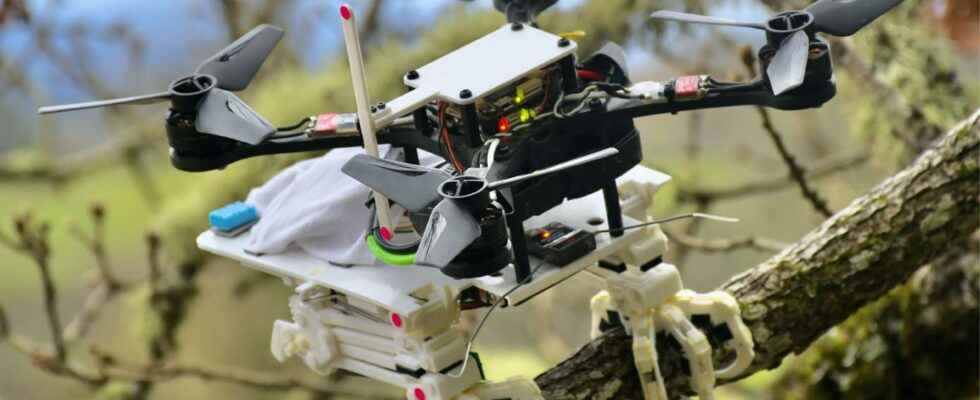Researchers at Stanford University have succeeded in transforming a drone into a real bird capable of perching on any branch. Printed in 3D, the mechanism is inspired by the legs of raptors.
You will also be interested
[EN VIDÉO] This drone is as comfortable in the air as it is under water Researchers at Johns Hopkins University in the United States have developed a fully waterproof drone capable of staying for long periods underwater, only to come out when needed. Discover this astonishing innovation in video.
Nature often inspires researchers, who attempt to duplicate techniques that have taken millions of years to evolve. Engineers from stanford university based their new invention on the Peregrine Falcon. Their article, published in the journal Science Robotics, details how they transformed a simple drone as a raptor capable of clinging to branches and grabbing objects.
Rather than trying to duplicate the bird flight mode, they were only inspired by his paws. They created two legs that end in clamps, mounted on a quadcopter drone fairly classic, to allow it to perch on any branch.
Like a bird, these robotic legs added to a drone allow it to cling to branches. © Stanford University
3D printed legs
The two legs are made of a 3D printed structure similar to the bones of birds, motors and wire. peach to replace muscles and tendons. The system was named Snag (stereotyped nature-inspired aerial grasper). Each of the two limbs contains a motor to control the leg and a second to pinch. Everything has been designed to absorb theenergy impact and transform it into a gripping force.
The mechanism can be triggered in just 20 milliseconds. Once hooked to a branch, the ankles lock in place and an accelerometer indicates that the drone arose, starting an algorithm that balances it. The same mechanism also works for catching objects on the fly. Such a robot could be used for rescue operations, or simply to monitor the environment thanks to its ability to land on any natural surface and thus not be limited by the very short autonomy of drones.
Interested in what you just read?
.
fs1
